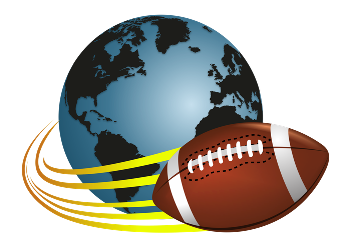


|
|
|
First NFL Game Site in Dayton by Randy Snow Original to www.theworldoffootball.com, Monday, June 4, 2018 When you think about the history of the NFL, the city of Dayton, Ohio does not rapidly come to mind. Most people will connect Dayton with things like the Wright Brothers, Wright-Paterson Air Force Base or the United States Air Force Museum. But nevertheless, Dayton holds a special place in football history and the birth of the NFL. Professional football had been played for many years prior to the establishment of the NFL in 1920. Prior to 1900, players were routinely paid (under the table) for their participation by many teams. A lot of college players would play under assumed names to take advantage of pro money while still keeping their college eligibility intact. William “Pudge” Heffelfinger became the first documented pro football player in 1892 when he was openly paid $500 by the Allegheny Athletic Association in Pennsylvania to play in a game against the Pittsburgh Athletic Association. Four years later, in 1896, the Allegheny Athletic Association became the first organization to field an entire team of paid players, becoming the first pro football team. There were many pro football teams playing in the state of Ohio in the early 1900s. A number of them were part of what was known as the Ohio League, a loosely structured collection of teams which began in 1903. But after 1919, more structure was needed if the teams were to survive. A few decided to form a new pro football league that would have stricter rules on player salaries, contracts and movement of players from team to team. Four Ohio League teams held a meeting on August 20, 1920 at a Hupmobile car dealership in Canton, Ohio. The dealership was owned by Ralph E. Hay, who was also the owner of the Canton Bulldogs pro football team. The Bulldogs won the Ohio League title in 1916, 1917 and 1919. The other three Ohio teams were the Akron Pros, Cleveland Indians, and the Dayton Triangles. Dayton had won the Ohio League title in 1918.They decided to call the new league the American Professional Football Conference (APFC). A second meeting was held about a month later, on September 17. At that meeting, the name of the league was changed to the American Professional Football Association (APFA). The name would be changed once again in 1922. This time, to the National Football League. Along with the four Ohio based teams that were a part of the first meeting, six more teams were in attendance at the second league meeting; the Hammond Pros and the Muncie Flyers from Indiana, the Rochester Jeffersons from the state of New York and the Rock Island Independents, Decatur Staleys, and Racine Cardinals from Illinois. (The Staleys were owned by George Halas and the team would eventually move to the Windy City and become the Chicago Bears) The owners voted to install Jim Thorpe, the former Olympic star and current player for the Canton Bulldogs, as the league’s first president, hoping to bring publicity to the new league through his fame and popularity. After the second meeting, four more teams were added to the league; the Buffalo All-Americans, Chicago Tigers, Columbus (Ohio) Panhandles, and Detroit Heralds. This brought the number of teams in the new league to 14. On October 3, 1920, the first game between two APFA teams took place. The Dayton Triangles defeated the Columbus Panhandles 14-0 at Triangle Park in Dayton, Ohio,
Dayton went on to post a record of 5-2-2 in 1920. (4-2-2 in APFA league play and another win over a non-league team, the Cincinnati Celts) It was the best season the Triangles had as an NFL team. They finished sixth out of the 14 teams in the league that year. The Akron Pros won the first APFA title in 1920. In 10 seasons as an NFL team, the Triangles posted a record of 18 wins, 51 losses and eight ties. The team folded following the 1929 season after a dismal 0-6 record. Triangle Park is still around today, but the football field is long gone. Instead, a baseball/softball stadium called Howell All-Star Field now graces the spot where the first NFL game was once played. In 1960, Pete Rose played minor league baseball on that very field. In 2005, a historical marker was unveiled near the field to commemorate the site of the first official NFL game. IF YOU GO I recently made a trip to Dayton and found the historic marker. It is located just outside the baseball stadium, behind the center field fence. The address of Triangle Park is 2680 Ridge Avenue in Dayton. My GPS took me to a small, shady parking lot at the top of a hill. Don’t park in this lot unless you want to walk all the way down the hill to the baseball field. There is another parking lot just down the road. It is much bigger and located at the bottom of the hill, behind the stadium. From there, it is much easier to find the historical marker. You will plainly see it as you walk up the cement path towards the back of the stadium. Ohio is very proud of its many connections to football history. This was the third historical marker that I have visited so far in the state. One is in Portsmouth, home of the NFL Portsmouth Spartans who moved to the Motor City in 1934 and became the Detroit Lions. The other is in the tiny town of LaRue, where the NFL Oorang Indians, starring Jim Thorpe, played from 1922-1923. LINKS Here are links to articles on both of my visits to those towns; LaRue, Ohio - Oorang Indians Portsmouth, Ohio - Portsmouth Spartans
|